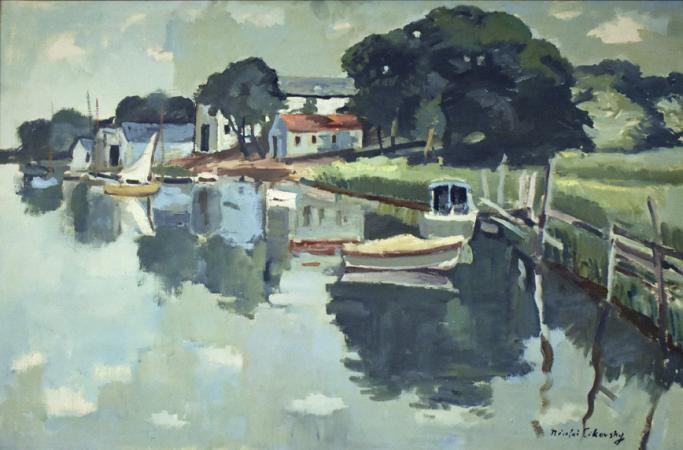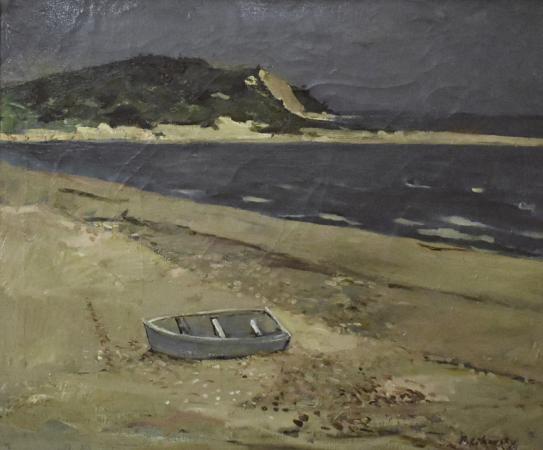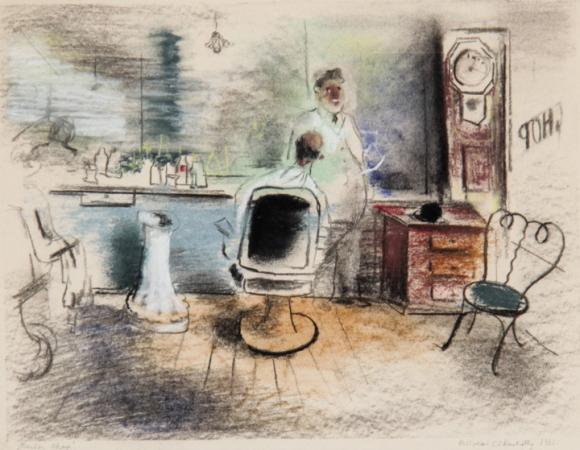Nicolai Cikovsky

Nicolai Cikovsky
The well known and highly regarded landscape and figure painter Nicolai S. Cikovsky was born in Russia in 1894. He studied at the Vilna Art School, 1910-1914; the Penza Royal Art School, 1914-1918; and Moscow High Tech Art Institute, 1921-1923. Thus he came of age during a period of momentous cultural, political, and social upheaval.
In the aftermath of the civil war, he left Russia and emigrated to the United States in 1923, exhibiting in that year in New York City at the Charles Daniels Gallery and, in the early 1930s, the Downtown Gallery and the Whitney Museum of American Art. In 1942, Cikovsky began spending summers on Long Island, New York, in the North Sea area, where he moved permanently in the late 1970s.
Best known for his plein air landscapes of bucolic Hampton Bays, NY and figurative works, Cikovsky was lauded for his ability to infuse his art with feeling, capturing the spirit of a place. In Long Island he was one of the Hampton Bay Group of artists.The informally noted leader of the group was dramatic and acclaimed Blaue Reiter,Futurist- Expressionist fellow Russian artist David D. Burliuk. Emigre artists who would later be involved in the group came to America around the same time but under different circumstances. Burliuk and Cikovsky left an unhospitable Bolshevik Russia following Worl War II , arriving here in 1922 & 1923, respectively. The Soyer twins, Moses and Raphael, arrived as youngsters in 1912, fleeing Tsarist anti-Jewish persecution. John Graham (b. Ivan Dombrovski) and Arshile Gorky (formerly Vosdanig Adoian) arrived in 1920 in search of a place to make a living as artists. George Constant arrived from Greece in 1910 seeking an art education. Once in New York, these artists sought out places to exhibit their work. Ultimately, the downtown Manhattan gallery scene united them with many other artists emigre artists.
Cikovsky was a member of New York City institutions, including the National Academy of Design (Associate 1968; Academician 1970); National Institute of Arts and Letters; and Society of Painters, Sculptors, and Cikovsky’s works were exhibited & won prizes in the most important exhibitions of the day, including the Brooklyn Museum's 1926 International Exhibition of Modern Art, the National Academy of Design & Art Institute of Chicago annuals, and at the NY World’s Fair. Other exhibitions included MOMA & the Whitney Museum of American Art, NYC, the Pennsylvania Academy of the Fine Arts, and the Carnegie Institute.




